Composition with Twelve Tones:
Chapter 12
The set of my Variations for Orchestra, Op. 31, is shown in Example 16a.
A work for orchestra must necessarily be composed of more voices than one for a smaller combination. Of course, many composers can manage with a small number of voices by doubling them in many instruments or in octaves, by breaking and doubling the harmony in many ways – sometimes thereby obscuring the presence of a content, sometimes making its absence clear. It must be admitted that most orchestral combinations do not promote what the artist calls unmixed, unbroken colors. The childish preference of the primitive ear for colors has kept a number of imperfect instruments in the orchestra, because of their individuality. More mature minds resist the temptation to become intoxicated by colors and prefer to be coldly convinced by the transparency of clear-cut ideas.
Avoidance of doubling in octaves automatically precludes the use of broken harmonies which contribute so much to the pleasant noise that is today called "sonority." Since I was educated primarily by playing and writing chamber music, my style of orchestration had long ago turned to thinness and transparency, in spite of contemporary influences. To provide for the worst seems better wisdom than to hope for the best. Therefore, I declined to take a chance, and, by making some slight changes, built the basic set so that its antecedent, starting a minor third below, inverted itself into the remaining six tones of the full chromatic scale.
Example 16:

Example 16a:
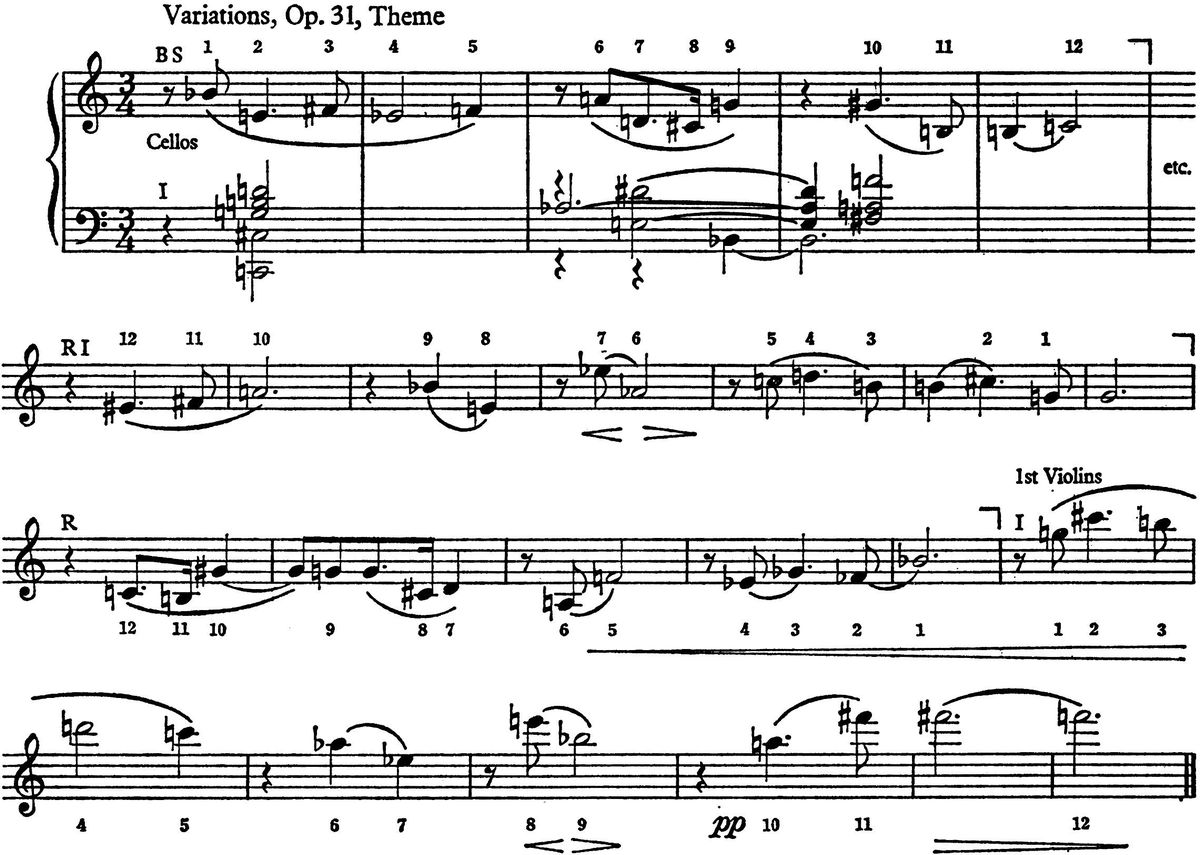
Besides, I used in many places a device, derived from double counterpoint of the tenth and twelfth, which allows the addition of parallel thirds to every part involved. By transposing BS a third up (BS3) and INV a third down (INV3), I obtained two more basic forms which allowed the addition of parallel thirds.
Example 17:
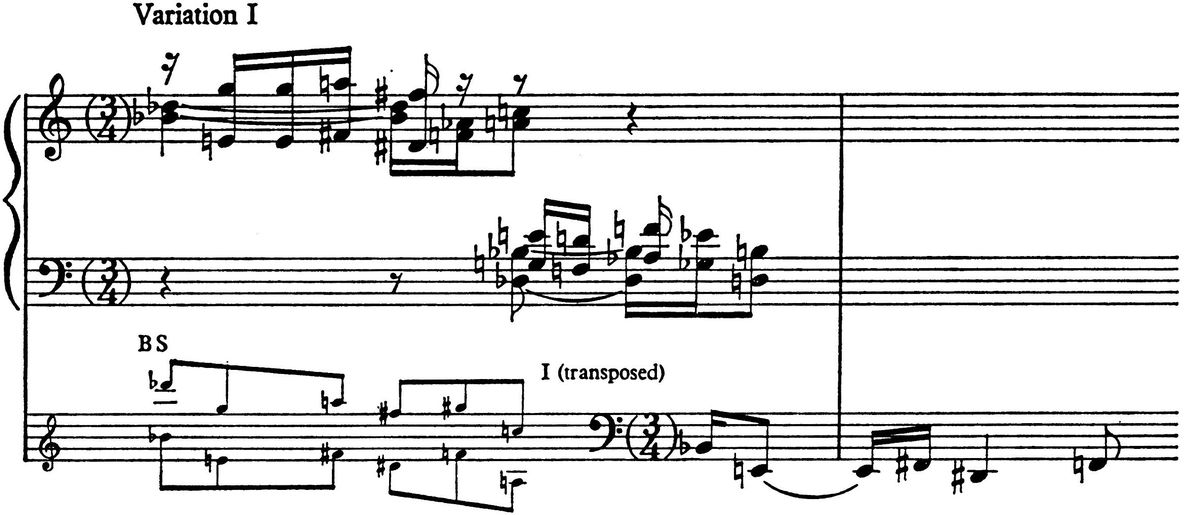
In the First Variation (Example 17) I used this device often, but not as often as I had expected. Very soon I recognized that my apprehension was unnecessary. Of the following examples, chosen at random to illustrate other peculiarities, none shows the addition of parallel thirds. After an introduction successively revealing the tones of the BS and its INV3, the "Theme" of the Variations appears (Example 16). Built as a ternary form, it uses the tones of the BS and its three derivatives in strict order, without any omission or addition.
Example 18:

The motive of the Fifth Variation is based on a transposition of the INV (INV8). Here are six independent parts built from only one set, comprising only the first two beats; the continuation carries on this system and finds ways to produce a satisfactory amount of variety.
Example 19:
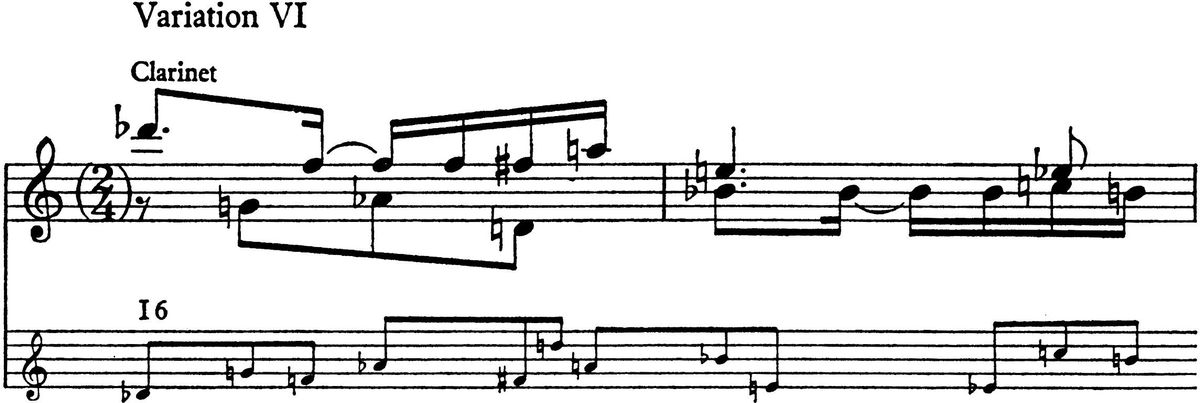
The motive of the Sixth Variation is built from another transposition of the INV (INV6). It is composed of a contrapuntal combination of two melodic parts, using some tones of INV6 in the upper and others in the lower voice. This combination allows a great number of forms which furnish material for every demand of variation technique. New forms result through inversion of both voices (Example 20a) and other changes of their mutual positions such as, for instance, canonic imitation (Example 20b).
Example 20:
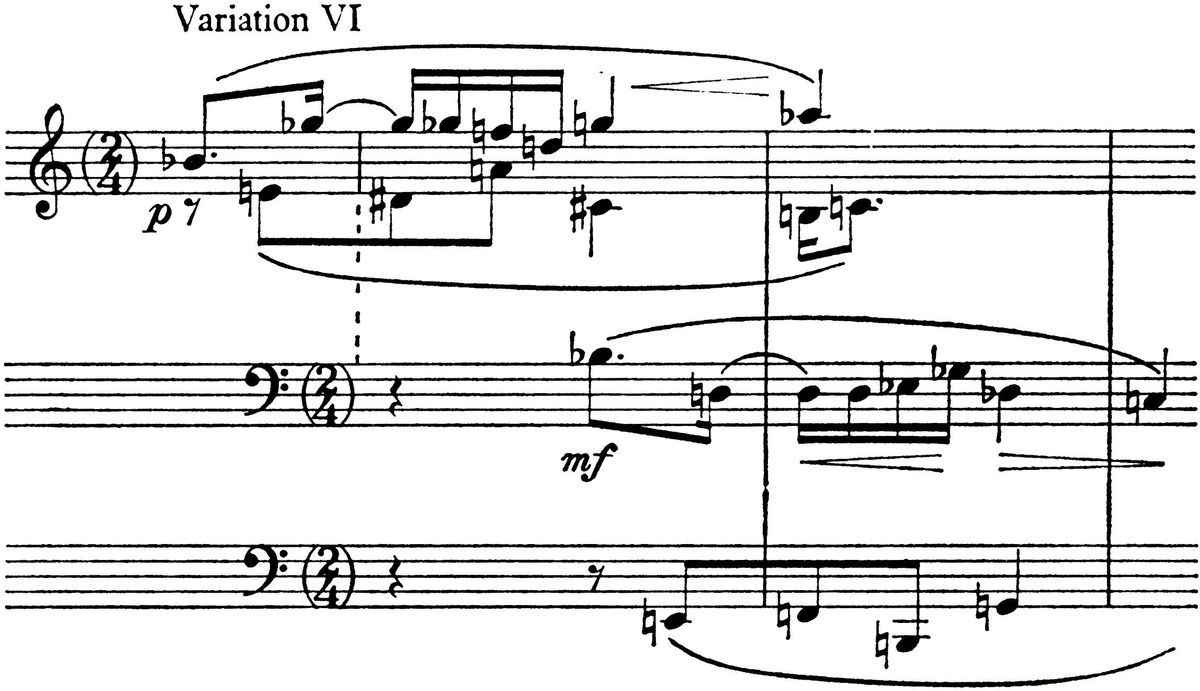
Example 20a:
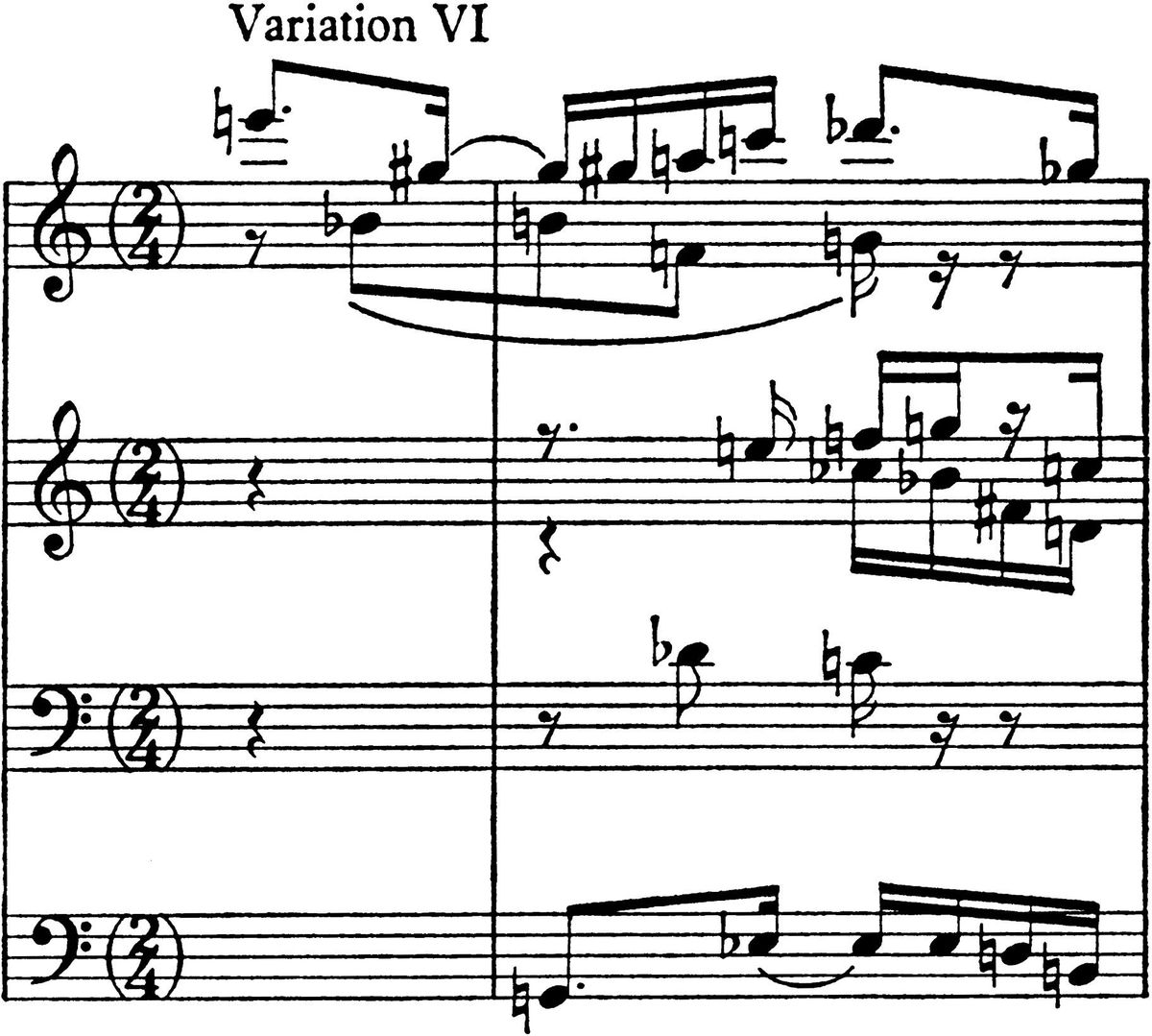
One should never forget that what one learns in school about history is the truth only insofar as it does not interfere with the political, philosophical, moral or other beliefs of those in whose interest the facts are told, colored or arranged. The same holds true with the history of music, and he who guilelessly believes all he is told – whether he be layman or professional – is defenseless and has to "take it," to take it as they give it. Of course, we know their guesses are no better than ours.
But unfortunately our historians are not satisfied with rearranging the history of the past; they also want to fit the history of the present into their preconceived scheme. This forces them to describe the facts only as accurately as they see them, to judge them only as well as they understand them, to draw wrong conclusions from wrong premises, and to exhibit foggy visions of a future which exists only in their warped imaginations.
I am much less irritated than amused by the critical remark of one Dr. X, who says that I do not care for "sound."
"Sound," once a dignified quality of higher music, has deteriorated in significance since skillful workmen – orchestrators – have taken it in hand with the definite and undisguised intention of using it as a screen behind which the absence of ideas will not be noticeable. Formerly, sound had been the radiation of an intrinsic quality of ideas, powerful enough to penetrate the hull of the form. Nothing could radiate which was not light itself; and here only ideas are light.
Today, sound is seldom associated with idea. The superficially minded, not bothering with digesting the idea, notice especially the sound. "Brevity is essential to wit;" length, to most people, seems to be essential to sound. They observe it only if it lasts for a comparatively long time.
It is true that sound in my music changes with every turn of the idea – emotional, structural, or other. It is furthermore true that such changes occur in a more rapid succession than usual, and I admit that it is more difficult to perceive them simultaneously. The Seventh Variation offers just such obstacles to comprehension. But it is not true that the other kind of sonority is foreign to my music.
The rapid changes of the sonority in this Seventh Variation make it difficult for the listener to enjoy. The figure in the bassoon part continues for some time, while the instrumentation of the harmonies in eighth notes changes rapidly and continuously.
Example 21:
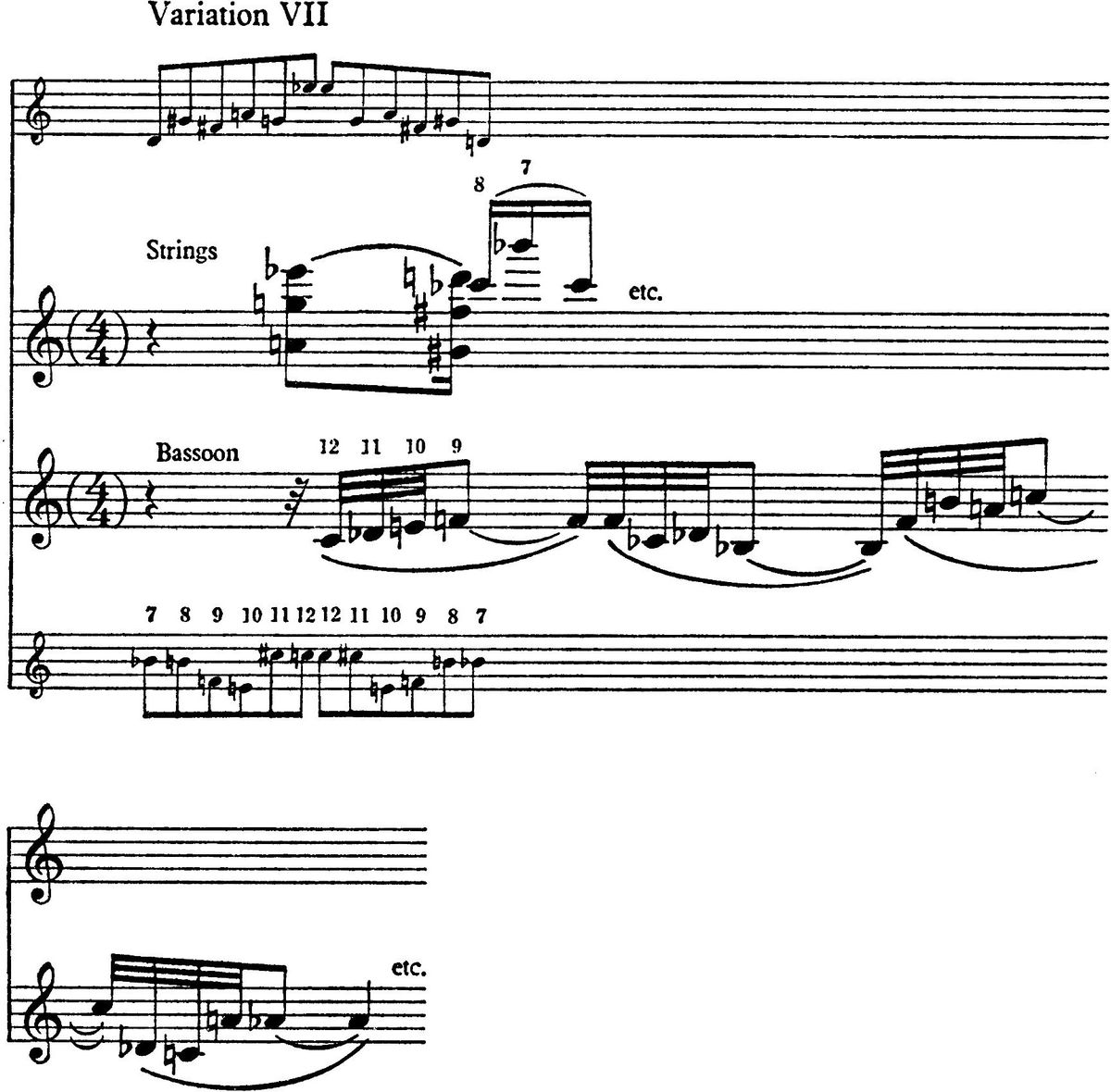
Example 22:
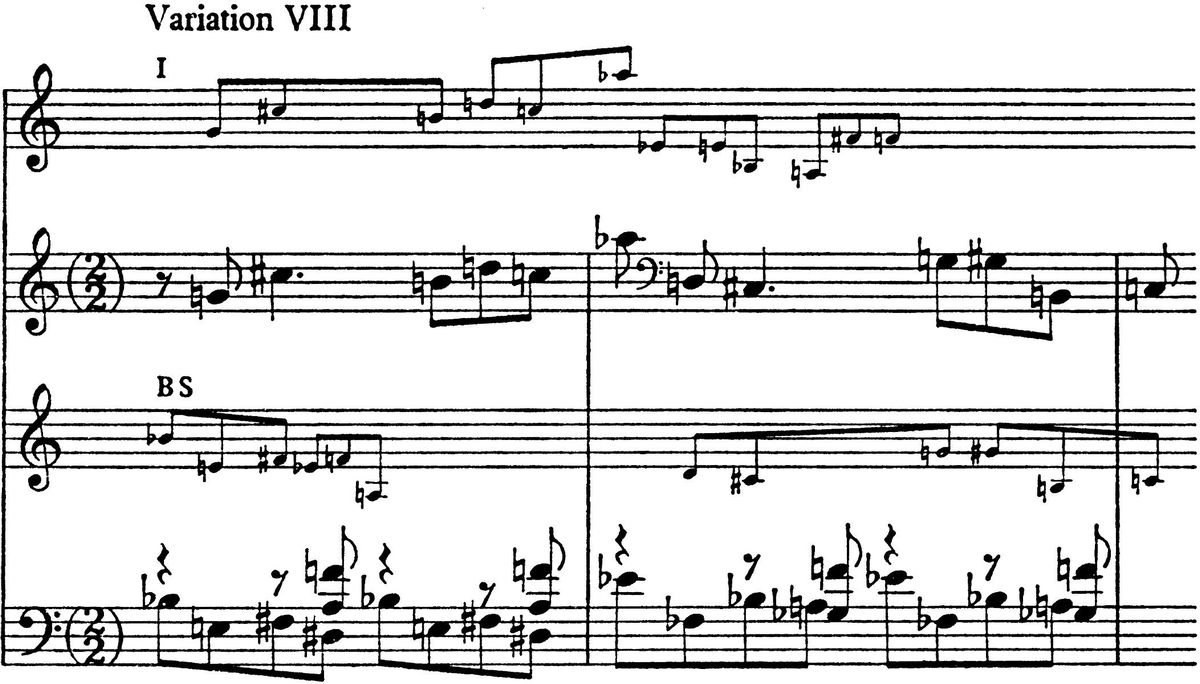
Example 23:

Example 24:
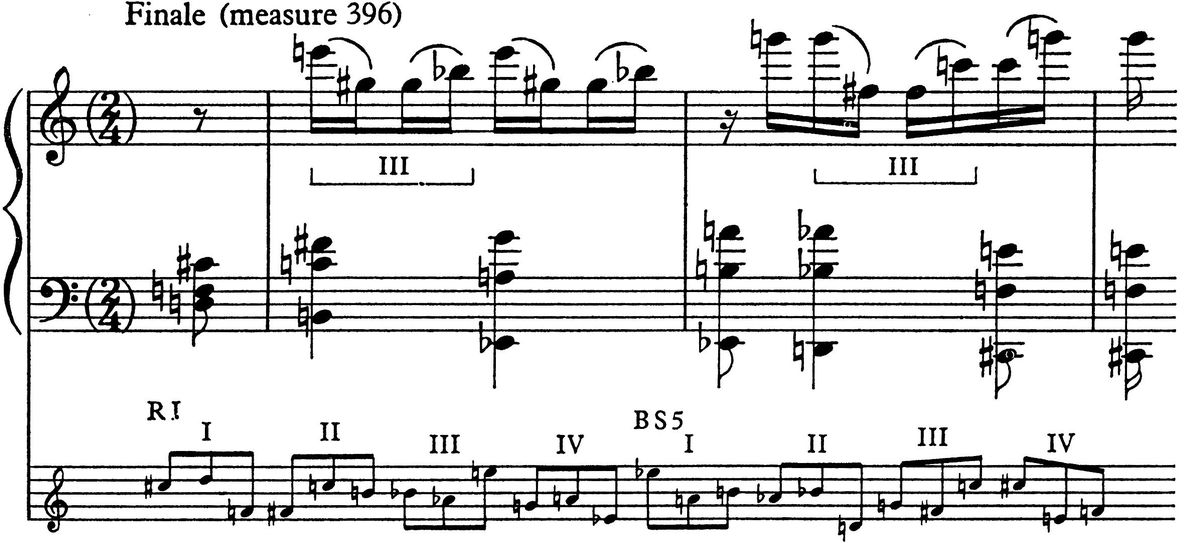
Examples 21-24 show that a great multitude of thematic characters can be derived from one set. Various methods are, of course, applied. It may be worth while to mention that in Example 25 as a homage to Bach, the notes B-flat, A, C, B, which spell, in German, BACH, were introduced as a contrapuntal addition to the principal thematic developments.
Example 25:

The main advantage of this method of composing with twelve tones is its unifying effect. In a very convincing way, I experienced the satisfaction of having been right about this when I once prepared the singers of my opera Von Heute Auf Morgen for a performance. The technique, rhythm and intonation of all these parts were tremendously difficult for them, though they all possessed absolute pitch. But suddenly one of the singers came and told me that since he had become familiar with the basic set, everything seemed easier for him. At short intervals all the other singers told me the same thing independently. I was very pleased with this, and, thinking it over, I found even greater encouragement in the following hypothesis:
Prior to Richard Wagner, operas consisted almost exclusively of independent pieces, whose mutual relation did not seem to be a musical one. Personally, I refuse to believe that in the great masterworks pieces are connected only by the superficial coherence of the dramatic proceedings. Even if these pieces were merely "fillers" taken from earlier works of the same composer, something must have satisfied the master's sense of form and logic. We may not be able to discover it, but certainly it exists. In music there is no form without logic, there is no logic without unity.
I believe that when Richard Wagner introduced his Leitmotiv – for the same purpose as that for which I introduced my Basic Set – he may have said: “Let there be unity.”














